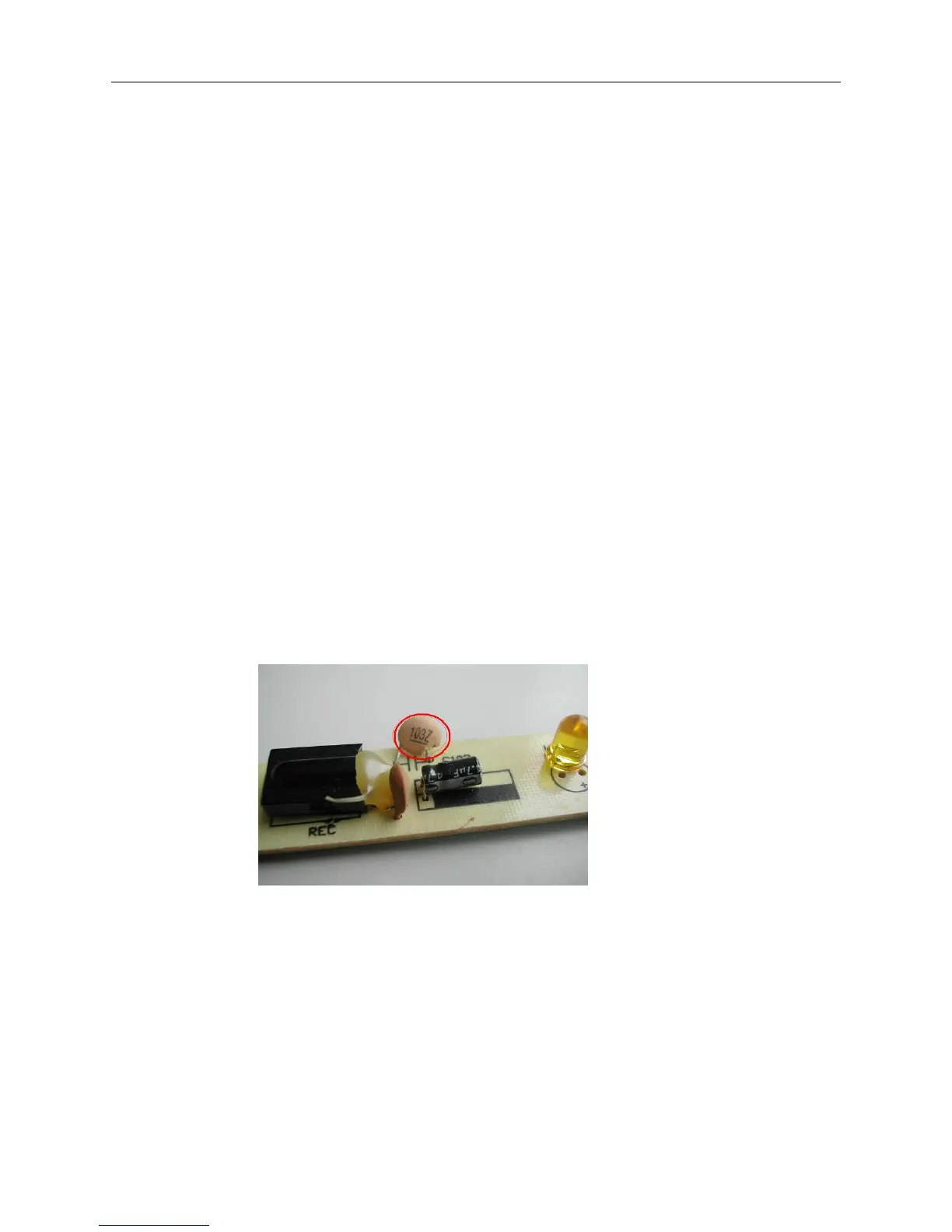AUX air conditioner service manual
Reason Analysis: to check remote controller, point the remote controller to an ordinary radio and push
any buttons on it, radio responded, so remote controller worked well, and there must be some faults in
main control panel or receiver of remote controller of indoor unit. Opened outside cover of indoor unit
to check 220V input power and 12V and 5V voltage, and found that they functioned properly; started
up air conditioner manually and it operated well, so main control panel had no problem. We presumed
that fault must occur on the components of remote receiver. We checked the receiver and found that
insulation resistance of ceramic chip capacitor (103Z/50v) was only several thousand ohm, while
resistance of good ceramic chip capacitor shall be over 10000MΩ, leakage current was too large so
that receiver failed to function.
Solution: cut 103 capacitor or replaced display panel, air conditioner had been functioning normally
since then.
Experience conclusion: there’re many causes of malfunction of remote receiver, besides leakage of
capacitor, dry joint of components also can result in faults of remote receiver. In addition, environment
where air conditioner is used also can impact function of remote receiver; when environment humidity
is relatively high, condensate will condense on the weld joints on the back of remote display panel,
circuit panel is musty and its insulation performance declines, and welding joints leak, so remote
controller can’t turn on the air conditioner or fails to work. Clean circuit panel, dry the panel with
blower and then weld a layer of glass glue on the back of display panel, remote controller can function
properly. AM channel of radio can check whether remote control can send signal. If air conditioner
functions after turned on manually, main control panel has no problem, so there must be some faults in
receiver. When air conditioner need repair, especially repeated repair, it is very important to analyze
the reason why components can not function well instead of replacing components without careful
consideration.
Case 4 Temperature sensor cannot function well
Product Model:ASF-H24B4/FS
Phenomena: Poor heating efficiency, air velocity is relatively low.
Cause analysis: we went to client’s home to check the air conditioner, turned on the unit and pushed on
the heating button. Air velocity was relatively low, air outlet was very hot; under cooling and
ventilation mode, air velocity was adjustable and varies obviously, we concluded that fan functioned
well. So we presumed that there may be certain problem in indoor temperature sensor.
Solution: replaced indoor temperature sensor, and air condition functioned normally
Experience conclusion: when air conditioner heats the room, it can prevent producing of cold wind, so
189

